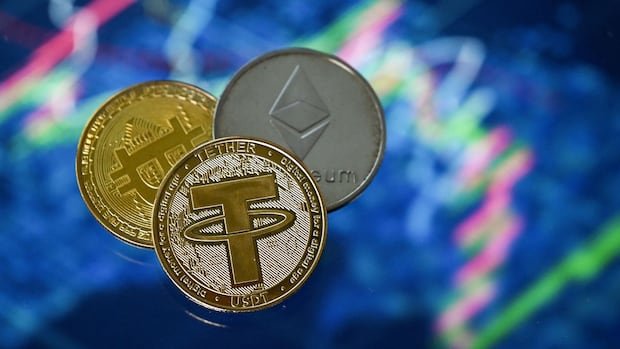In a modern-day race akin to the space race of the 21st century, leading global economic powers are asserting their influence in an obscure form of digital currency that has the potential to transform the way individuals, businesses, and nations transact financially.
The focus is on stablecoins, a category of cryptocurrency that is tied to a specific nation’s currency or valuable assets like gold. The core concept behind stablecoins is that their value is linked to a stable asset, making them less susceptible to the fluctuations commonly associated with traditional cryptocurrencies.
Essentially, stablecoins function as a virtual equivalent of traditional currencies, maintaining a one-to-one exchange rate with their real-world counterparts. Investors hold reserves of the actual assets to secure the value of stablecoins against the volatility of other cryptocurrencies. These digital coins are engineered for seamless conversion into the tangible assets they represent, enabling instant and cost-effective transactions across borders.
While stablecoins are not widely accepted for daily transactions currently, experts foresee a future where their rapid transaction speeds and low fees could drive broader adoption. Following the U.S.’s enactment of a regulatory framework providing clarity on stablecoin issuance and acceptance, China is reportedly considering a similar move to expand the global influence of its currency, potentially challenging the supremacy of the U.S. dollar.
Stablecoins have been in existence since 2014, pioneered by the U.S. company Tether, which introduced the first stablecoin pegged to the U.S. dollar. Although stablecoins are yet to achieve mainstream usage, one of the prominent applications advocated by supporters is in facilitating cost-effective international remittances.
Advocates argue that stablecoins could significantly reduce the expenses associated with cross-border money transfers, particularly benefiting immigrants sending remittances to their home countries. By leveraging blockchain technology, which operates as a decentralized system for validating transactions, stablecoins streamline payment transfers without the need for traditional banking intermediaries.
However, skeptics raise concerns about the potential misuse of stablecoins for illicit financial activities, given their circumvention of conventional financial oversight mechanisms. Furthermore, there are fears that if stablecoins were to lose their pegged value, similar to the collapse of the Terra-Luna stablecoin in 2022, it could trigger a crisis resembling a bank run.
Major countries have recently established regulatory frameworks to oversee stablecoin circulation, such as the U.S.’s GENIUS Act, which enables private firms to issue and accept stablecoins. Concurrently, entities like Amazon, Walmart, and prominent U.S. banks are exploring the development of their stablecoin variants, aligning with the evolving regulatory landscape.
Distinguishing stablecoins from central bank-issued digital currencies and equities, they serve as e-money tokens under regulatory frameworks in Europe and the U.S. Canada’s classification of stablecoins as securities presents challenges for issuing stablecoins backed by Canadian assets.
With the majority of stablecoins pegged to the U.S. dollar, countries worldwide are hastening regulatory efforts to mitigate the dominance of the American currency, safeguarding their financial sovereignty. The U.S. dollar’s status as the primary global reserve currency faced scrutiny earlier this year, prompting countries to explore alternatives to hedge against potential currency vulnerabilities.
China’s strategic move in launching its central bank digital coin in 2019 disrupted private sector digital payment providers, signaling a shift in the digital payments landscape. The U.S.’s regulatory framework for private stablecoin experimentation has prompted China to reevaluate the efficacy of central bank digital currencies, potentially accelerating technological advancements from the East.
While the likelihood of China’s yuan challenging the supremacy of the U.S. dollar remains slim, the evolving global economic landscape underscores the potential for new currencies to emerge as standard bearers amidst geopolitical transformations.


